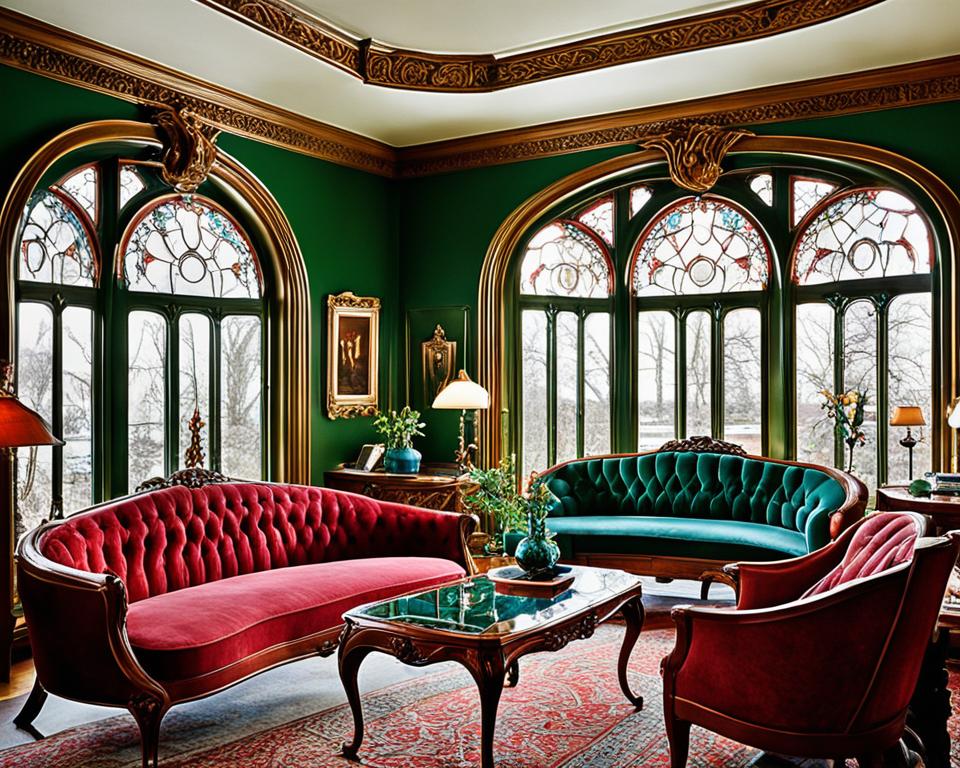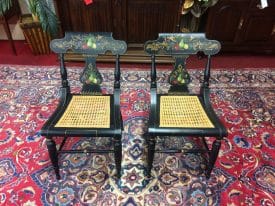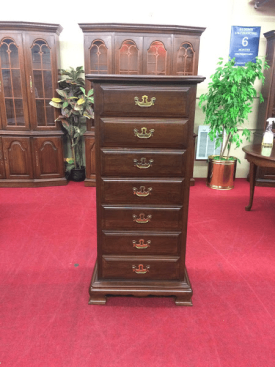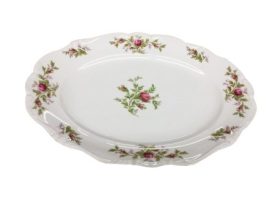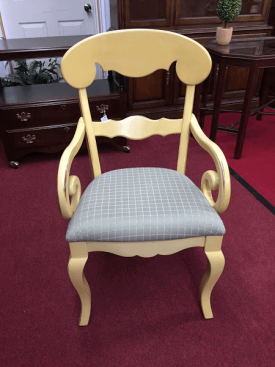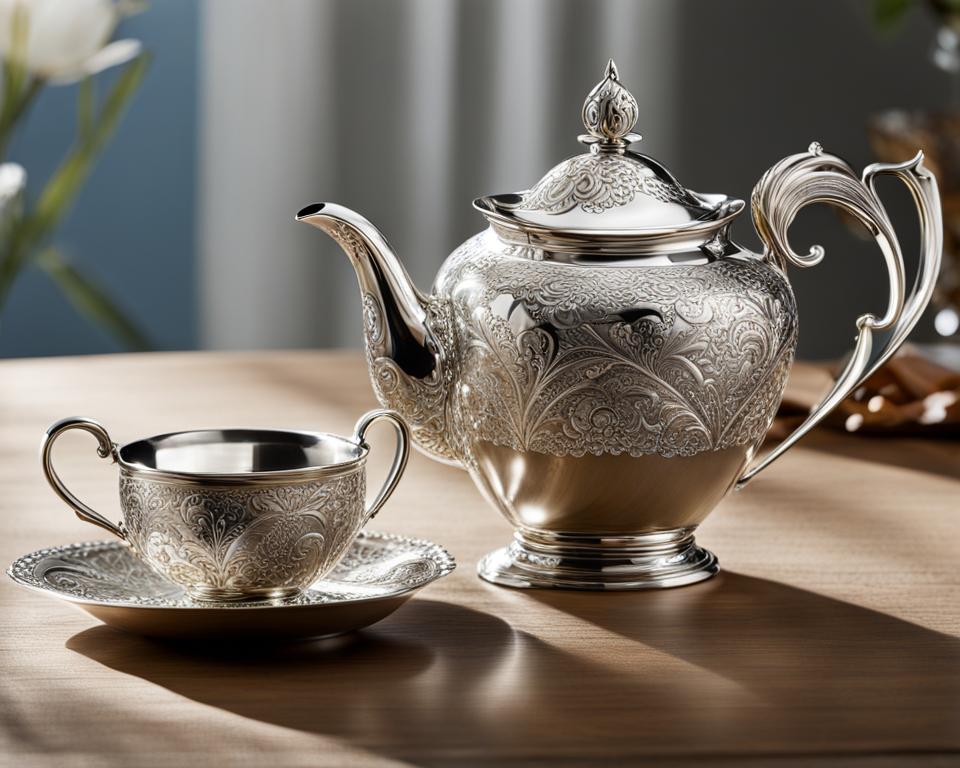Art Nouveau antique furniture, with its intricate details and elegant designs, continues to captivate collectors and enthusiasts alike. Rooted in the late 19th and early 20th centuries, this style emerged as a response to the industrial revolution’s influence, bringing art into every aspect of life, including interior design.
Art Nouveau furniture, known for its organic forms and flowing lines, creates a harmonious and aesthetically pleasing environment. Whether you’re drawn to vintage Art Nouveau furniture or looking to incorporate Art Nouveau style into your modern space, its timeless allure never fails to make a statement.
Key Takeaways:
- Art Nouveau antique furniture showcases intricate details and elegant designs.
- It emerged as a response to the industrial revolution, incorporating art into all aspects of life.
- Art Nouveau furniture features organic forms and flowing lines, creating a harmonious environment.
- Whether vintage or modern, Art Nouveau style adds a timeless allure to any space.
- Collectors and enthusiasts value the craftsmanship and unique charm of Art Nouveau furniture.
The Origins of Art Nouveau Design
Art Nouveau design emerged in Europe as a reaction against the mechanistic influence of the industrial revolution on the art world. It aimed to blur the lines between fine arts and decorative arts and bring art into all aspects of life. The style quickly spread across Europe and the United States, leaving a significant impact on the design world.
Art Nouveau design sought to break free from the constraints of traditional artistic and design movements of the time. It was a complete departure from the heavy ornamentation of the Victorian era and the strict geometric forms of the Art Deco movement that followed.
The movement embraced the organic beauty of nature and drew inspiration from natural forms and patterns. It sought to capture the essence of nature’s fluidity and create harmonious designs that integrated seamlessly into the environment.
Art Nouveau design encompassed various disciplines, including fine arts, decorative arts, architecture, and interior design. Artists and designers of the time aimed to elevate the status of decorative arts to the same level as fine arts, blurring the boundaries between the two.
One of the key figures associated with the development of Art Nouveau design is the architect and designer Victor Horta. His innovative and avant-garde approach to architecture, blending decorative elements with structural design, became a defining characteristic of the movement.
The spread of Art Nouveau design can be attributed to various factors, including advancements in printing technology and the establishment of international exhibitions and galleries. These platforms allowed the movement’s ideas and designs to reach a broader audience and gain popularity.
Art Nouveau design’s influence can be seen in various forms, from architecture to furniture, jewelry, ceramics, and even graphic design. The movement’s focus on intricate detailing, fluid lines, and organic shapes continues to inspire designers and artists today.
Art Nouveau design remains a testament to the power of artistic expression, serving as a reminder that art can transcend traditional boundaries and make a lasting impact on the world of design.
Art Nouveau design transformed the landscape of art and design, creating a legacy that continues to captivate and inspire. Its influence can be seen in the intricate craftsmanship, fluid lines, and organic forms that define the movement. Whether in architecture, interior design, or decorative arts, Art Nouveau design represents a unique and timeless approach to creating visually stunning and harmonious spaces.
Design Philosophy of Art Nouveau
The design philosophy of Art Nouveau revolves around cherishing the beauty of nature and embracing organic forms, flowing lines, and intricate details. This artistic movement seeks to create harmonious environments that promote aesthetic pleasure and comfort. With a focus on craftsmanship and handmade items, Art Nouveau design exudes a unique charm and elegance.
Art Nouveau draws inspiration from the enchanting elements of nature, infusing them into every aspect of its design. The graceful curves and organic shapes mimic the wonders of the natural world, bringing a sense of serenity and tranquility to interior spaces. The flowing lines evoke a sense of movement and fluidity, creating a dynamic yet balanced atmosphere.
Intricate details are a hallmark of Art Nouveau design, displaying the meticulous craftsmanship and attention to detail that define this style. From delicate floral motifs to ornate patterns, every element is meticulously crafted, adding depth and visual interest to the overall aesthetic.
Art Nouveau design aims to provide aesthetic pleasure and comfort to those who experience it. The carefully designed spaces exude a sense of tranquility and evoke a feeling of being one with nature. By incorporating natural elements and organic forms, Art Nouveau interiors create a soothing and inviting ambiance that promotes relaxation and enjoyment.
The emphasis on craftsmanship and handmade items further enhances the appeal of Art Nouveau design. Each piece is meticulously crafted, showcasing the skill and dedication of the artisans. This attention to detail and commitment to quality ensure that Art Nouveau furnishings and decor not only provide aesthetic pleasure but also stand the test of time.
“Art Nouveau design embraces the beauty of nature and celebrates the inherent harmony of organic forms. Its flowing lines and intricate details create a visual feast for the eyes, bringing aesthetic pleasure and comfort to those who appreciate its unique charm.”
Colors in Art Nouveau Design
The color palette in Art Nouveau design draws inspiration from the beauty of nature. Soft and muted tones dominate, evoking the subtle hues of flora and fauna. These nature-inspired colors create a sense of tranquility and harmony within Art Nouveau interiors.
Imagine the delicate shades of olive green, reminiscent of lush leaves, or the warm glow of mustard yellow, reminiscent of sun-drenched meadows. Peacock blue, with its rich and tranquil allure, adds depth and a touch of sophistication to the color palette.
To create visual interest and contrast, Art Nouveau designers often punctuate these soft tones with bold accents. Picture a ruby red accent wall, like a vibrant poppy in a serene garden, or a deep violet velvet sofa, exuding opulence and mystery amidst the muted surroundings.
This harmonious blend of soft and muted tones with bold accents showcases the delicate balance and artistic expression of Art Nouveau design.
| Nature-Inspired Colors | Soft Tones | Bold Accents |
|---|---|---|
| Olive Green | Mustard Yellow | Ruby Red |
| Peacock Blue | Subtle and Tranquil | Deep Violet |
Materials in Art Nouveau Design
Art Nouveau design draws on a diverse range of materials, reflecting its connection to nature and its emphasis on craftsmanship. From natural materials to man-made creations, the choice of materials in Art Nouveau interiors is instrumental in creating the desired aesthetic. Let’s explore some of the key materials commonly used in Art Nouveau design:
Wood
Wood is a fundamental material in Art Nouveau design, known for its versatility and ability to be intricately carved and shaped. Furniture pieces in Art Nouveau style often feature sinuous lines and flowing forms created from the rich grains of wood. Oak, walnut, and mahogany are frequently utilized to achieve the desired warmth and organic feel.
Glass
Glass is another prominent material in Art Nouveau design, often used to create decorative elements and captivating light effects. Stained glass windows, delicate glass panels, and intricate glass lighting fixtures add a touch of elegance and artistry to Art Nouveau interiors. The interplay of light and glass creates a mesmerizing ambiance.
Wrought Iron
Wrought iron is favored in Art Nouveau design for its ability to be forged into intricate, organic shapes. This material is commonly used in stair railings, decorative screens, and light fixtures. The flowing lines and delicate details of wrought iron add a sense of grace and sophistication to the overall design.
Ceramics
Ceramics play a significant role in Art Nouveau interiors, offering an opportunity to showcase intricate patterns and tactile textures. From decorative tiles to ornamental vases, ceramics bring a sense of craftsmanship and artistry to the design. Earthy tones and natural motifs are often employed, reflecting the movement’s connection to nature.
Textiles
Textiles, such as upholstery and drapery, contribute to the overall ambiance and comfort of Art Nouveau interiors. Rich fabrics with elaborate patterns and motifs are used to create visually striking accents. Textiles add depth to the design, creating a sense of coziness and luxury.
Stained Glass
Stained glass is a hallmark of Art Nouveau design, known for its vibrant colors and intricate details. It is commonly used in windows, doors, and decorative panels, allowing natural light to filter through and illuminate the space with a kaleidoscope of hues. Stained glass adds texture, visual interest, and a touch of ethereal beauty.
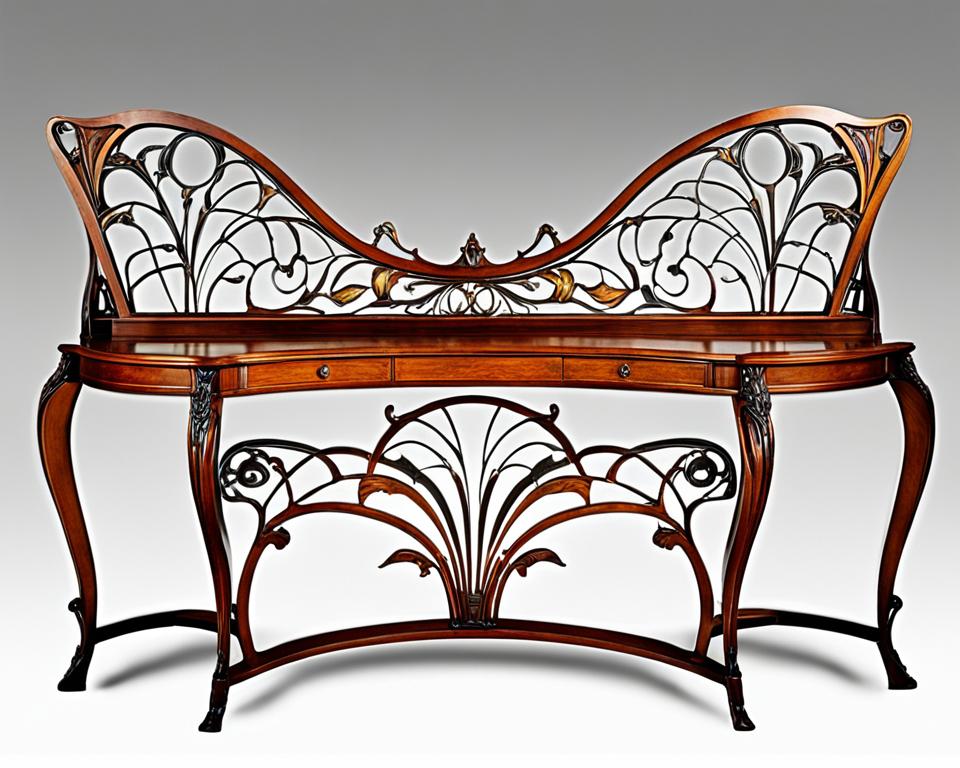
The use of these diverse materials in Art Nouveau design results in interiors that are visually captivating and harmoniously blended with nature. The combination of wood, glass, wrought iron, ceramics, textiles, and stained glass adds texture, depth, and a sense of craftsmanship to Art Nouveau spaces, creating an immersive and unique experience.
Furniture and Fixtures in Art Nouveau Design
Art Nouveau furniture embodies the essence of the movement with its sinuous lines, organic shapes, and intricate detailing. This style of furniture showcases the craftsmanship and natural inspiration that define Art Nouveau design. Each piece seamlessly combines functionality with aesthetic appeal, creating furniture that is both visually striking and comfortable.
The use of high-quality materials, such as wood, glass, and wrought iron, further enhances the beauty and durability of Art Nouveau furniture. The expert craftsmanship that goes into creating these pieces ensures that each item is a work of art in its own right.
Intricately Designed Tables and Chairs
Tables and chairs are integral parts of Art Nouveau interiors. Tables often feature flowing lines and organic shapes, while chairs boast elegant curves and intricate detailing. These pieces add a touch of sophistication to any space, whether it’s a dining room or a cozy reading nook.
Sculptural Cabinets and Shelving Units
Art Nouveau cabinets and shelving units are not only practical storage solutions but also sculptural works of art. With their flowing lines and intricate carvings, these pieces serve as focal points in a room, adding a unique charm to the overall design.
“Art Nouveau furniture combines both form and function. The organic shapes and sinuous lines not only create visually appealing pieces but also ensure that the furniture is comfortable and easy to use.” – Interior Designer
Decorative Screens and Room Dividers
Decorative screens and room dividers in Art Nouveau design are characterized by their intricate patterns and delicate detailing. These versatile pieces can be used to define spaces, create privacy, or serve as beautiful decorative elements that add depth and visual interest to a room.
Accessorizing with Art Nouveau
Completing the Art Nouveau look, accessories such as mirrors, lighting fixtures, and textiles can enhance the overall aesthetic of a space. Mirrors with ornate frames, stained glass pendant lights, and patterned curtains or rugs can all contribute to the Art Nouveau ambiance.
By incorporating Art Nouveau furniture and fixtures into your interior design, you can create a space that exudes beauty, elegance, and a timeless charm.
Organic Forms and Ornamentation in Art Nouveau Furniture
Art Nouveau furniture incorporates organic forms and ornamentation, often featuring flowing lines, floral motifs, and stylized natural elements. This emphasis on organic forms and intricate detailing gives Art Nouveau furniture a distinctive and timeless appeal.
The sinuous lines and curvaceous shapes of Art Nouveau furniture reflect the movement’s inspiration from nature and the human form. Chairs and tables are crafted with elegant curves, mimicking the graceful flow of plants and the human body. This attention to organic forms creates furniture that is visually captivating and harmonious in any interior.
One of the signature features of Art Nouveau furniture is the use of stylized natural elements. Floral motifs, such as lilies, irises, and poppies, are commonly incorporated into the design, adding a touch of elegance and femininity. These floral elements are often intricately carved or inlaid, showcasing the craftsmanship and attention to detail that define Art Nouveau.
Furthermore, Art Nouveau furniture’s timeless appeal lies in its ability to seamlessly blend with different design styles. Whether placed in a traditional, eclectic, or contemporary setting, Art Nouveau furniture adds a touch of elegance and sophistication. Its organic shapes and stylized natural elements create a sense of harmony and balance in any space.
Take a look at the example below to see a stunning piece of Art Nouveau furniture:
| Material | Color | Dimensions | Price |
|---|---|---|---|
| Wood | Dark brown | 32″H x 22″W x 24″D | $1,500 |
This exquisite Art Nouveau chair showcases the movement’s emphasis on organic forms and intricate craftsmanship. The flowing lines of the chair back and armrests, adorned with delicate floral motifs, create a sense of elegance and beauty. Crafted from dark brown wood, this chair adds warmth and sophistication to any room. With its timeless appeal, this Art Nouveau chair is not only a functional piece of furniture but also a work of art.
Accessories and Décor in Art Nouveau Interiors
Art Nouveau spaces are characterized by their attention to detail and emphasis on natural-inspired elements. To enhance the overall design aesthetic, carefully chosen accessories and décor items play a significant role in Art Nouveau interiors. These pieces showcase organic shapes, intricate patterns, and natural-inspired motifs, contributing to the unique ambiance of the space.
Artwork takes center stage in Art Nouveau interiors, reflecting the movement’s celebration of fine arts. Paintings, sculptures, and prints featuring organic forms, botanical themes, and graceful figures adorn the walls, creating focal points and adding a touch of sophistication to the space.
In Art Nouveau interiors, every element is thoughtfully considered, down to the smallest detail. The organic beauty of nature is often conveyed through the artwork, breathing life and charm into the space.
Wall décor plays a crucial role in Art Nouveau design. Intricate wallpaper patterns, often featuring floral motifs or abstract designs, create a visual tapestry that complements the overall organic aesthetic. The wallpaper serves as a backdrop, enhancing the beauty of the furniture and other decorative elements.
Lighting fixtures in Art Nouveau interiors are not just functional but also works of art in themselves. Pendants, sconces, and chandeliers feature ornate designs inspired by nature, with delicate curves and flowing lines. These fixtures cast a warm and inviting glow, highlighting the intricate patterns and detailing found throughout the space.
Decorative objects further contribute to the Art Nouveau ambiance. Ceramics, vases, and pottery with handcrafted details can be exhibited in prominent areas, adding texture and visual interest. The use of natural materials like wood, stained glass, and wrought iron in decorative objects complements the overall organic design philosophy.
| Accessories | Description |
|---|---|
| Artwork | Original paintings, sculptures, and prints featuring organic forms and botanical themes |
| Wallpaper | Intricate patterns with floral motifs or abstract designs |
| Lighting fixtures | Pendants, sconces, and chandeliers with ornate designs inspired by nature |
| Decorative objects | Ceramics, vases, and pottery with handcrafted details |
The overall effect of these accessories and décor items is to create a cohesive and visually stunning Art Nouveau interior. By incorporating organic shapes, intricate patterns, and natural-inspired motifs, these elements accentuate the beauty of the space and reinforce the timeless elegance of Art Nouveau design.
Applying Art Nouveau Design in Different Rooms
Art Nouveau design principles are not limited to a specific room in a home. They can be seamlessly incorporated into various spaces, resulting in a cohesive and elegant living environment. Whether it’s the living room, bedroom, kitchen, or bathroom, Art Nouveau design offers adaptability and versatility that allows for a harmonious integration of its unique elements.
Living Room
In the living room, embrace the fluidity of Art Nouveau by opting for furniture with sinuous lines and organic shapes. Consider a curvaceous sofa or armchair that harmonizes with the surrounding décor. Enhance the aesthetic appeal with patterned wallpaper or curtains featuring intricate motifs inspired by nature. Adorn the walls with artwork and decorative objects that embody the essence of Art Nouveau design.
Bedroom
Transform your bedroom into a serene and elegant retreat by incorporating Art Nouveau elements. Choose a bed with an ornate headboard and flowing lines to create a focal point. Dress the windows in soft and muted tones, complementing the natural-inspired color palette of Art Nouveau. Accessorize with patterned textiles and decorative pieces that celebrate the organic forms and intricate detailing of the movement.
Kitchen
Infuse your kitchen with Art Nouveau charm by selecting cabinetry and hardware with intricate designs. Consider glass-fronted cabinets to showcase beautiful dishware or ceramics. Incorporate organic forms into the backsplash or flooring through intricate tile patterns. Add subtle artistry by displaying vintage Art Nouveau-inspired tableware or accessories.
Bathroom
In the bathroom, create a serene and relaxing space with Art Nouveau elements. Choose fixtures with flowing lines and elegant curves, such as faucets and sinks. Incorporate stained glass windows or panels to infuse the space with a touch of color and artistry. Complete the look with intricate tiling patterns and organic-inspired accent pieces like wall sconces or mirrors.
By embracing Art Nouveau design in different rooms, you can create a home that exudes elegance, harmonious aesthetics, and adaptability. Whether it’s the fluid lines in the living room, the ornate detailing in the bedroom, the intricate designs in the kitchen, or the artistry in the bathroom, Art Nouveau design adds a timeless and versatile touch to every space.
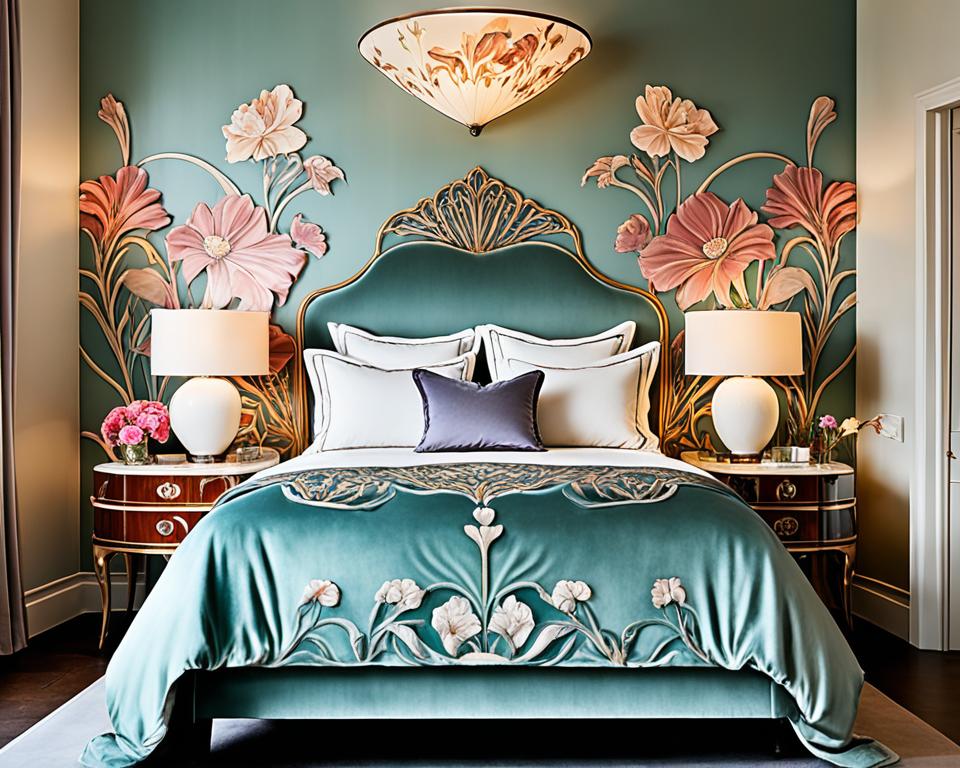
Art Nouveau Design Ideas for Different Rooms
| Room | Art Nouveau Design Ideas |
|---|---|
| Living Room |
|
| Bedroom |
|
| Kitchen |
|
| Bathroom |
|
Conclusion
Art Nouveau interior design offers a unique and enduring approach to creating harmonious, elegant, and visually appealing living spaces. With its emphasis on organic forms, intricate detailing, and craftsmanship, Art Nouveau has maintained its enduring popularity over the years.
The timeless appeal of Art Nouveau lies in its ability to seamlessly blend nature-inspired elements with sophisticated design. The sinuous lines, flowing curves, and stylized natural motifs create a sense of harmony and tranquility in any room. Whether it’s a living room, bedroom, kitchen, or bathroom, Art Nouveau design can be adapted to suit different spaces without compromising its elegance and versatility.
One of the key strengths of Art Nouveau interior design is its focus on craftsmanship. From hand-carved furniture to meticulously crafted stained glass windows, every element in an Art Nouveau interior is a testament to the dedication and skill of artisans. The attention to detail and commitment to quality ensure that Art Nouveau interiors not only look stunning but also stand the test of time.
By embracing the elegance, versatility, and craftsmanship of Art Nouveau, designers and homeowners can create living spaces that exude timeless charm and beauty. Whether you’re a fan of the movement’s intricate furniture or its nature-inspired color palette, Art Nouveau interior design has something to offer for everyone who appreciates the seamless blending of art and functionality.
FAQ
What is Art Nouveau design?
Art Nouveau design is a distinct expression of organic forms, intricate details, and elegance in interior design. It emerged in the late 19th and early 20th centuries as a reaction against the industrial revolution’s influence, aiming to bring art into all aspects of life.
What are the origins of Art Nouveau design?
Art Nouveau design emerged in Europe as a reaction against the mechanistic influence of the industrial revolution on the art world. It sought to blur the lines between fine arts and decorative arts and quickly spread across Europe and the United States.
What is the design philosophy of Art Nouveau?
Art Nouveau design cherishes the beauty of nature and emphasizes organic forms, flowing lines, and intricate details. It aims to create harmonious environments that promote aesthetic pleasure and comfort, with a focus on craftsmanship and handmade items.
What colors are commonly used in Art Nouveau design?
The color palette in Art Nouveau design is inspired by nature, featuring soft and muted tones like olive green, mustard yellow, and peacock blue. These colors are often punctuated with bold accents like ruby red or deep violet, creating a dynamic contrast.
What materials are commonly used in Art Nouveau design?
Art Nouveau design uses a diverse range of materials, reflecting its connection to nature and focus on craftsmanship. Commonly used materials include wood, glass, wrought iron, ceramics, textiles, and stained glass, adding texture and visual interest to interiors.
What characterizes Art Nouveau furniture?
Art Nouveau furniture showcases sinuous lines, organic shapes, and intricate detailing, reflecting the movement’s emphasis on craftsmanship and natural inspiration. It combines functionality with aesthetic appeal, resulting in beautiful and comfortable pieces.
How does Art Nouveau furniture incorporate organic forms and ornamentation?
Art Nouveau furniture often features flowing lines, stylized natural elements, and floral motifs as a way to embrace organic forms and ornamentation. This emphasis gives Art Nouveau furniture a distinctive and timeless appeal.
What role do accessories and décor play in Art Nouveau interiors?
Art Nouveau interiors often feature carefully chosen accessories and décor items that showcase organic shapes, intricate patterns, and natural-inspired motifs. Artwork, wall décor, lighting fixtures, and decorative objects enhance the aesthetic and reinforce the design aesthetic.
Can Art Nouveau design be applied to different rooms in a home?
Yes, Art Nouveau design principles can be applied to various rooms within a home, creating a cohesive and elegant living environment. Each room can incorporate Art Nouveau elements such as fluidly shaped seating, organically designed furniture, and patterned accents.
What are the main characteristics of Art Nouveau interior design?
Art Nouveau interior design offers a unique and enduring approach to creating harmonious, elegant, and visually appealing living spaces. Its timeless appeal, versatile design elements, and focus on craftsmanship have contributed to its enduring popularity.

